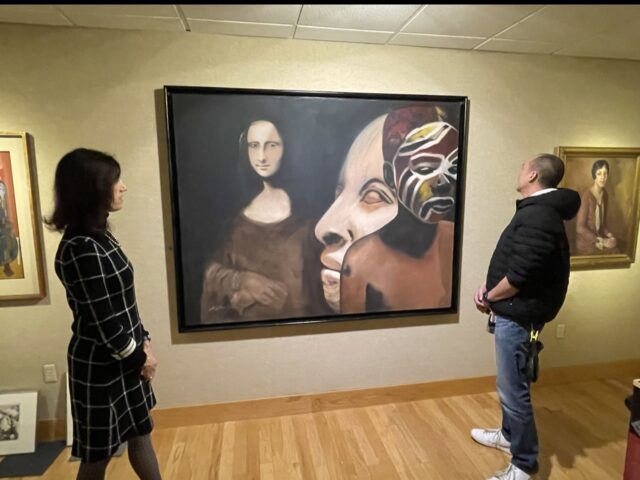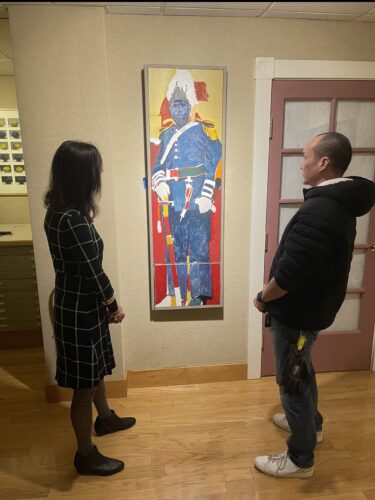By Christopher Gillett
Jambar Contributor
The Butler Institute of American Art displays artworks from diverse communities and accommodates visitors of different backgrounds.
To commemorate Black History Month, the Butler has displayed Greatness Revealed: The Art of African Americans, which runs Feb. 4 to March 24 and showcases the work of lesser-known African American artists.
Among the 31 artists featured are Charles Sallée, the first African American graduate of the Cleveland Institute of Art, and designer of the Renaissance Hotel in Cleveland.
Another artist featured in the exhibition is Robert Gwathway. Although Gwathway is a white artist, his work focuses on African Americans’ lives and social change.
Other African American artists in the collection include Jacob Lawrence, Romare Bearden, Horace Pippin, Maple Turner III, Al Bright, and Bill Dotson.

Alongside the pieces in Greatness Revealed, the Butler’s art collection spans from 1719 to the present. The collection features various mediums, such as paintings, photography and sculptures.
Director of Education Joyce Mistovich said the museum has too many pieces of art to display all at once.
“The Butler has about 22,000 works in our collection. We can never have those all on display at one time,” Joyce said. “Many of the artists [in Greatness Revealed] are artists that are no longer living today, but have played great impact in American art history.”

Louis Zona, executive director of the Butler Museum, said adding to the Butler’s collection is his favorite part of the job.
“My favorite part of working at the Butler is working with the paintings, working with the art and adding to the collection,” Zona said. “While there are many collectors around here, we have solicited the works from collectors around the country, and we’ve been fairly successful.”
In addition to diversifying the artists it showcases, the museum also works to create an inclusive experience for people with disabilities.
Joy Mistovich shares her mother’s love for art as the education department assistant and digital UX accessibility specialist. Joy’s work focuses on accommodating visitors with disabilities.
“I’m deeply passionate about accessibility and assistive technology and assisting the disability community and non-disability community with art appreciation and museum education,” Joy said.
Joy incorporated an app — Aira, or access to information remote assistance — to connect low-vision and blind visitors to highly-trained and remotely-located visual interpreters, allowing people with sight limitations to experience the artwork.
Joy said her experience being legally blind has informed her work to make the Butler more accessible.
“I always liked to visit museums, but I also considered the arts as somewhat of a mystery. I couldn’t always decipher challenging smaller details and artistic elements in each work until I started using … Aira,” Joy said.
The Butler also hosts Sensory Sundays on the first Sunday of every month. The museum opens an hour early for people with autism spectrum disorder or other cognitive disabilities to browse the museum without crowds. The Butler also offers amplifiers for people who are hard of hearing.
According to Joyce, the Butler acts as a safe space for travelers, too.
“When you travel somewhere — and let’s just say you’re traveling alone, you’re attending a conference or workshop, or visiting a family member, or you’re [just] alone — going to a museum offers a space where you can just relax and become engaged in looking at the works of art,” Joyce said.
Joyce also said art can speak to its audience.
“If you really look at works of art, and you listen, there’s something that they have to say to you,” Joyce said.
